Bubbles in glass
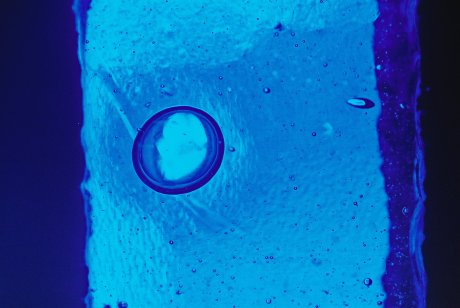
The Metropolitan Cathedral of Christ the King in Liverpool (otherwise known as Paddy’s Wigwam, but I prefer to use the name that Liverpool’s congregation gave the church) is built from a series of concrete slabs. Between the slabs are narrow strips of coloured glass pieces held in lead as a structural element, the glass is around 3 or 4 inches thick and the pieces are various sizes.
The glass has bubbles and other fold marks frozen in place from the day in the 1960s when the glass was poured. Photographing these bubbles with a macro lens affords the same feeling as focussing through a thick specimen in a microscope. At far focus, the bubble forms an image of the exterior structure of the Cathedral and the skyline. Middle focus emphasises the rim of the bubble. Focussing on the surface of the glass inside the Cathedral presents you with an underwater view.
All the images I took on this dummy run can be found on my flickr account.
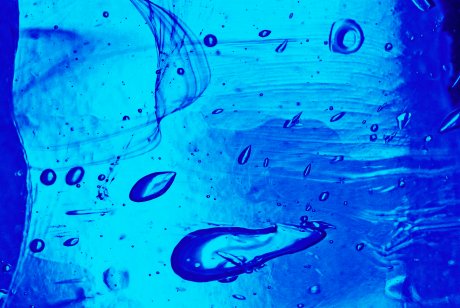
This image reminds me of the drawings of a ‘typical sea bed’ that you had in children’s books – one of everything drawn in a small space of water
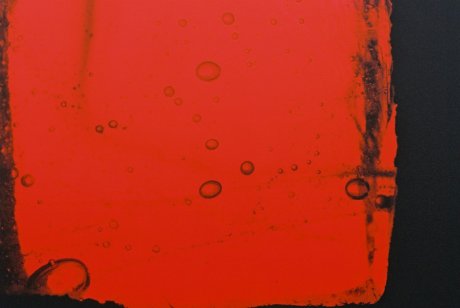
Red seems to have less rendition of tones than blue using the consumer negative film I had when in Liverpool last week. I shall try again with slide film and a tripod.
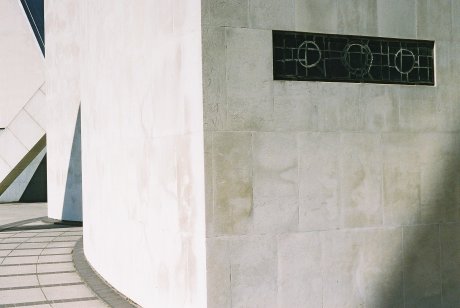
The walls and butresses of the Cathedral create a calm raised walkway around the exterior of the church. There is a good view of Liverpool’s sky line.
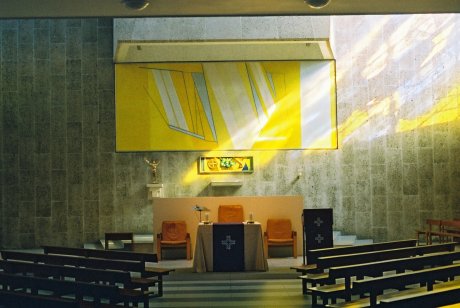
The interior is that of a working church – I prefer looking for the detail in small parts of the structure. The randomness that happens when a piece of glass (or a concrete slab) is poured on a certain day at a certain time and finished.